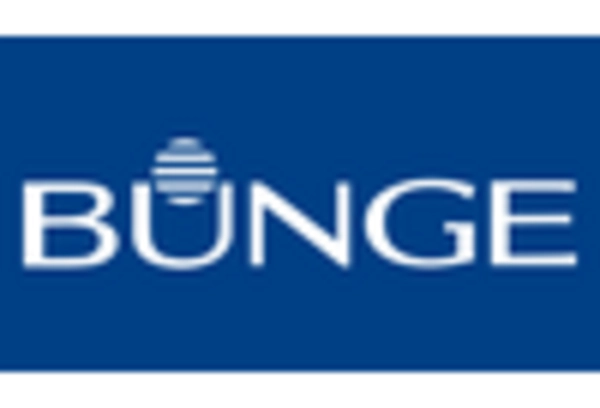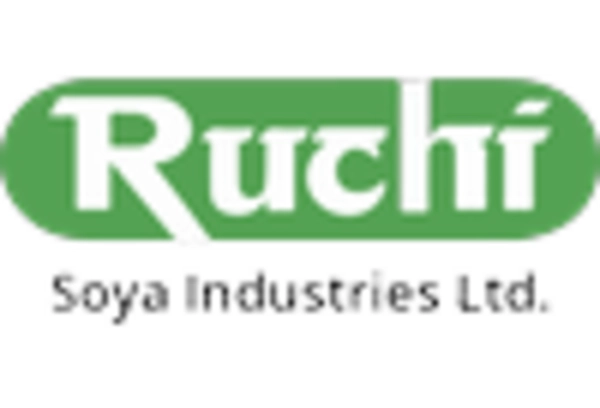Rising Demand for Edible Oils
The Indian Palm Oil Market is experiencing a notable increase in demand for edible oils, driven by changing dietary preferences and population growth. As urbanization continues to rise, consumers are gravitating towards convenience foods that often utilize palm oil as a key ingredient. In 2025, the per capita consumption of palm oil in India is projected to reach approximately 18 kg, reflecting a growing reliance on this versatile oil. This trend is further supported by the increasing availability of palm oil products in retail outlets, which enhances consumer access. The Indian Palm Oil Market is thus positioned to benefit from this rising demand, as manufacturers adapt their offerings to meet the evolving needs of consumers.
Health and Nutrition Awareness
The Indian Palm Oil Market is witnessing a shift in consumer attitudes towards health and nutrition, as individuals become more conscious of their dietary choices. This trend is reflected in the increasing demand for healthier cooking oils, including palm oil, which is perceived as a source of essential fatty acids and vitamins. In 2025, it is estimated that around 30% of consumers will prioritize health benefits when selecting cooking oils, thereby influencing purchasing decisions. The Indian Palm Oil Market is responding to this trend by promoting the nutritional advantages of palm oil, which may enhance its appeal among health-conscious consumers.
Government Policies and Support
The Indian Palm Oil Market is significantly influenced by government policies aimed at promoting domestic production and reducing import dependency. The government has implemented various initiatives, including subsidies for palm oil cultivation and incentives for farmers to adopt sustainable practices. These policies are designed to enhance the competitiveness of the domestic palm oil sector, which has seen a gradual increase in production levels. In 2025, domestic palm oil production is expected to reach around 10 million metric tons, contributing to a more self-sufficient market. Such supportive measures are likely to bolster the Indian Palm Oil Market, fostering growth and stability in the sector.
Global Market Trends and Trade Dynamics
The Indian Palm Oil Market is influenced by global market trends and trade dynamics, particularly in relation to pricing and availability. Fluctuations in palm oil prices on the international market can have a direct impact on domestic pricing strategies and consumer purchasing behavior. In 2025, it is projected that India will import approximately 14 million metric tons of palm oil, making it one of the largest importers in the region. This reliance on imports underscores the importance of global supply chains and trade agreements, which can affect the stability and growth of the Indian Palm Oil Market. As such, stakeholders must remain vigilant to these external factors that could shape market conditions.
Technological Innovations in Cultivation
The Indian Palm Oil Market is benefiting from advancements in agricultural technology that enhance palm oil cultivation efficiency. Innovations such as precision farming, improved seed varieties, and sustainable farming practices are being adopted to increase yield and reduce environmental impact. In 2025, it is anticipated that these technological advancements will lead to a 15% increase in palm oil yield per hectare, thereby supporting the growth of the Indian Palm Oil Market. As producers embrace these innovations, they are likely to improve productivity and sustainability, positioning the industry for long-term success.

















Leave a Comment